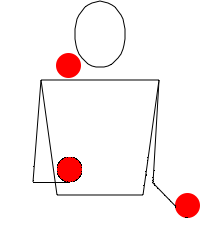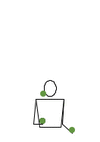Multiplex (juggling) facts for kids
Multiplexing is a cool juggling trick where you throw more than one ball from the same hand at the same time. Think of it like launching two or three balls all at once from one hand!
The opposite of a multiplex throw is called a squeeze catch. This is when you catch more than one ball in the same hand at the exact same moment. If you could play a video of a multiplex throw backwards, it would look like a squeeze catch!
Contents
What Are the Different Types of Multiplex Throws?
Naming Throws by Number of Balls
Multiplex throws get different names based on how many balls you throw at once from one hand:
- A uniplex is when you throw just one ball (even though you might be holding others).
- A duplex means you throw two balls at the same time.
- A triplex means you throw three balls at once.
- A quadruplex is for four balls.
- A quintuplex is for five balls.
Different Ways to Throw Multiplexes
Multiplex throws are usually put into different groups based on how the balls fly and are caught. The main types are: Stack, Split, Cut, and Slice.
Stacked Throws
In a stacked multiplex throw, you launch two or more balls from one hand. All the balls are then caught together in the same hand, or sometimes in your other hand. They stay close together in the air.
Split Throws
As the name suggests, split multiplex throws involve throwing balls from one hand, but they "split" apart in the air. You then catch them in separate hands. For example, with a duplex, one ball goes to your left hand and the other to your right.
Cut Throws
Cut multiplex throws are a bit more complex. You throw multiple balls, like in a stacked throw, but they are released slightly staggered. The first ball is caught and re-thrown before the second ball is even caught. This creates a quick, continuous motion.
Sliced Throws
Sliced multiplex throws are unique because one ball goes almost directly to your other hand. It's like a quick "pass" with very little air time. Meanwhile, the other ball (or balls) from the same throw will be caught later. Often, your catching hand is right above your throwing hand for this trick.
How Balls Look in the Air
Multiplex throws can also be described by how the balls are positioned in the air after you throw them.
Duplex Air Positions
- A horizontal duplex means the two balls fly side-by-side.
- A vertical duplex means the two balls fly one above the other.
You can combine these terms with the throw types. For example, a "vertical stacked duplex" means two balls are thrown together, one above the other, and caught together. A "horizontal split duplex" means two balls are thrown side-by-side and caught in separate hands.
Triplex Air Positions
- A vertical triplex means three balls fly one above the other.
- A triangle triplex means the three balls form a triangle shape in the air.
How Juggling Patterns Are Written (Notation)
Siteswap notation is a special way to write down juggling patterns. It helps jugglers understand the order and height of throws. For multiplex throws, the numbers are put inside square brackets [ ].
For example:
- `[22]` means two balls are held in one hand for one "beat" (or count) of the juggling pattern.
- `[54]` means a split duplex throw where one ball stays in the air for 5 beats and the other for 4 beats.
When you want to figure out how many balls are in a pattern that uses multiplex throws, you add the numbers inside the brackets together, but treat them as one throw.
- For example, in `[43]23`:
* You add `4 + 3 = 7` (for the multiplex part). * Then you add `7 + 2 + 3 = 12`. * Since there are 3 "throws" (the `[43]` counts as one, plus `2` and `3`), you divide `12` by `3`. * `12 / 3 = 4`. So, this is a 4-ball juggling pattern!
Juggling Styles: Claymotion
Claymotion is a special style of multiplex juggling. It was created by a British juggler named Richard Clay in the early 1990s. The name 'Claymotion' was given to it in 1997.
Claymotion juggling has a unique stop-and-go rhythm. This means there are times when no balls are in the air at all! The style focuses on smooth and graceful arm movements. The throws are usually kept low and very controlled.



